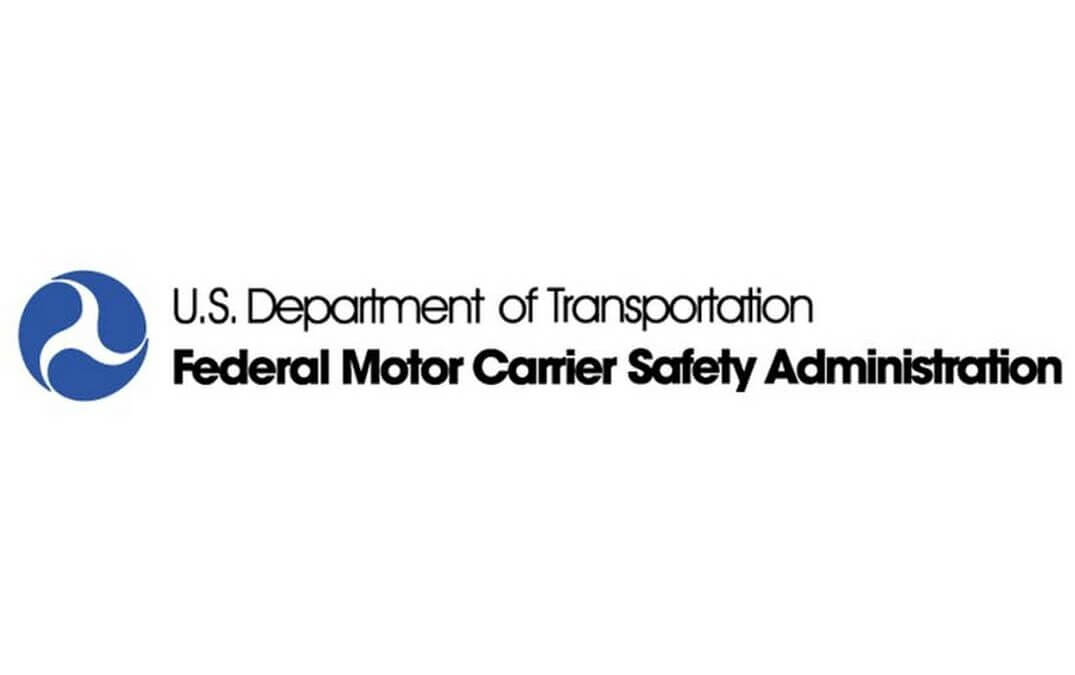
DOT Compliance, Fleet Management
As the world becomes increasingly interconnected, entire industries are continually seeking innovative solutions that streamline processes and enhance worker safety. When it comes to transportation and logistics, technological advancements from the past several years have played an important role in enhancing both safety and efficiency. At Vehicle Licensing Consultants (VLC), we embrace these enhancements through our partnership with Drivewyze, a leading provider of connected truck services. Together, we are revolutionizing work zone awareness for fleet companies across the nation.
Drivewyze Empowers Safe and Efficient Trucking Companies
Drivewyze is a cutting-edge online platform that leverages technology to improve safety and procedural efficiency for commercial truck drivers. It provides weigh station bypass and safety notifications to trucking fleets, enabling them to optimize routes and minimize downtime. Drivewyze utilizes GPS and cellular technology, and integrates easily with existing onboard systems so that drivers can have access to providing real-time insights and alerts.
Enjoy Enhanced Work Zone Awareness
On-road work zones pose unique challenges for drivers, especially those operating large vehicles. Drivers need to have a heightened sense of awareness and make sure to adhere to safety protocols at all times when in work zones for the safety of other motorists, the on-road workers, and the drivers themselves.
At VLC, we recognize the importance of work zone safety. That’s why we partner with Drivewyze to integrate their services with ours. This has allowed us to offer a truly comprehensive solution for trucking companies nationwide.
During National Work Zone Awareness Week and all year round, VLC and Drivewyze are committed to promoting safer driving practices within work zones. Through our partnership with Drivewyze’s platform, truck drivers receive timely notifications about approaching work zones, including information about reduced speed limits and specific, location-based regulations. These alerts are part of the driver’s regular notifications, so that they can remain informed at all times.
Drivewyze Key Features and Benefits
Real-time Notifications: Drivewyze provides truck drivers with real-time notifications about upcoming work zones, which allows them to adjust their speed and behavior accordingly.
Enhanced Compliance: By integrating Drivewyze’s platform, VLC enables trucking companies to increase compliance with work zone speed limits and regulations, which thereby reduces the risk of accidents and fines.
Streamlined Operations: With Drivewyze, trucking fleets can optimize routes and minimize delays, ultimately improving their efficiency and reducing their operational costs.
Improved Safety: By promoting work zone awareness, we at VLC and Drivewyze are contributing to safer roads for both drivers and construction workers.
At VLC, we are proud that our innovative partnership with Drivewyze is increasing the safety of drivers and workers. When your trucking company chooses to utilize Drivewyze’s advanced platform with VLC’s expertise, you can increase work zone awareness for your drivers, see improved safety, and likely avoid costly accidents. Call at VLC today at (530) 637-1696 or email info@im4trux.com to see how we can help you make your trucking company even better!

DOT Compliance, Driver Qualification File Management, Electronic Logging
In today’s fast-paced digital age, registration service companies in the transportation industry face numerous challenges when it comes to managing and processing large volumes of data efficiently. The need for reliable and user-friendly software solutions has never been greater. This is where GW Connect software can help. Designed specifically for transportation companies, GW Connect offers a wide range of features and benefits that can transform the way your business operates from personnel management to fleet vehicle management. At Vehicle Licensing Consultants we offer GW Connect software to our clients because we believe it is the most valuable program for fleet registration service companies, revolutionizing processes and enhancing overall productivity.
A Fleet Vehicle Management with a Seamless Registration Process
GW Connect software simplifies processes by providing a centralized platform that automates various tasks. From managing customer information to automating DMV and agency forms, the GW Connect software streamlines the entire workflow system. The program works with Adobe reader so that DMV forms can be easily auto filled or edited. By eliminating manual data entry and reducing the risk of errors and misplaced paperwork, transportation companies can save valuable time and resources, ensuring a smooth and hassle-free experience for all when it comes to personnel and fleet vehicle management.
Customization and Flexibility for Your Unique Business
Every transportation company has unique needs, and GW Connect software acknowledges this by offering various services and a great deal of flexibility. The software can be used to enhance specific renewal tracking and management whether it be renewal for drivers, trucks, permits, or any other approaching renewal date. This level of diversification ensures that companies can keep track of the data that is important to them at any given time and can store information digitally where it is easy to find.
Powerful Reporting and Document Management
GW Connect software provides comprehensive reporting and document management that allows fleet companies to digitize their records and keep track of documents in a secure, digital space. The “drag and drop” PDF files are easy to retrieve and stored digitally so organization is a breeze. Documents can be stored that relate to any aspect of your company from work orders and equipment data to worker certifications and customer information.
An Open API to Enable Connectivity to Other Software Solutions
We know that your company has a myriad of tools that work for you already, and GW Connect is built to be able to integrate with those tools to enhance your existing software programs. Set up is fast and easy and our expert team members are always available to answer any questions you may have.
Why Work With VLC for Fleet Vehicle Management Tools?
At Vehicle Licensing Consultants we are focused on providing your company with fleet vehicle management tools like GW Connect and DQM Connect to simplify your vehicle and personnel management. Through our innovative technology we help bring transportation companies into the 21st century by creating user friendly software programs that are simple to learn and easy to run.
Our ultimate goal is always to enhance the organization, efficiency, safety, and productivity of your business, and we look forward to helping you get started with our fleet and personnel management tools today. You can reach us by calling 530-637-1696 or emailing info@im4trux.com. Feel free to sign up for our newsletter to stay informed about our latest offerings as well.

DOT Compliance, DQMConnect™
The new driver physical requirement has been put in place this year by the DOT as an important part of keeping America’s roads and highways safe. Let’s take a look at what it is and what you need to do to keep compliant with the new health exam requirements.
What is the new 2022 DOT Physical?
The new 2022 DOT physical is a health exam required of commercial drivers by the Federal Motor Carrier Safety Administration to ensure that commercial drivers are capable of fulfilling their job. This exam must be completed by a DOT medical examiner and documented every 24 months.
Are All Drivers Required to Get a DOT Physical?
This requirement applies to the following classifications of drivers:
- Drivers who transport hazardous materials
- Drivers who are paid to operate a vehicle that carries over 8 people
- Drivers who operate a vehicle that carries more than 15 people
- Drivers who operate a vehicle with a gross combined weight of over 10,000 pounds
What does the Physical Consist of?
The DOT exam will cover:
- Health history
- Vision assessment
- Hearing test
- Blood pressure
As well as a number of other health factors that can indicate a risk while operating a commercial vehicle.
What Factors Might Disqualify a Driver?
Here are a few guidelines and some minimum requirements for drivers to pass their exam:
- 20/40 vision in each eye (with or without glasses); 70+ degrees field of vision; the ability to distinguish between red, green, and yellow.
- The hearing test requires you to hear a harsh whisper in your best ear
- Blood pressure below 180/100; blood pressure between 140/90 and 179/109 may require an annual exam.
- Medical conditions, such as diabetes, hernias, obesity, and sleep apnea that are not in control
- Uncontrolled or unstable heart conditions
- Epilepsy or seizure disorders
- Meniere’s disease, an inner ear disorder that causes dizziness
- Use of marijuana, even if prescribed
- Use of illegal substances
- Use of oxygen therapy
- Some respiratory conditions
What You Need to Know for Compliance
Just like any other DOT requirement, if your driver is caught without a medical certificate, they are taken off the road and you will pay for it. Not just in fines, but in the business that is impacted by the loss of a driver.
As driver requirements are changed, increased, and refined, it is so important to have a way to track which of your drivers complies and who may be coming due for their next medical exam.
Take a look at DQMConnect. This amazing application is helping many companies address the same concerns. Real-time alerts and a dashboard view of your driver compliance, puts you in control.
Keep your company safe, your drivers compliant, and your clients happy with DQMConnect.

DOT Compliance
Your business, including your fleet and drivers, need to be DOT-compliant to maintain its authority to operate in the United States. You will need to complete several steps to become DOT-compliant. While you can try to keep up with all the minutiae of running a business and making sure all your files are in order yourself, there is a lot of room for error.
Thanks to automated processes and DOT file management for everything from your records to DOT driver qualification files, there’s no need to worry about falling out of compliance. Here’s everything you need to know about DOT compliance and how your company’s DOT driver qualification files should be at the center of your compliance strategy.
DOT Compliance Explained
The Department of Transportation (DOT) is responsible for regulating the transportation of goods in the United States. In order to do this, DOT requires that all transportation companies operating in the country comply with a number of regulations.
One of these regulations is driver compliance. When a transportation company is DOT compliant, it has met all the requirements necessary to operate legally in the United States. To be DOT compliant, your company must adhere to several specific regulations.
These regulations cover everything from the qualifications of your drivers to the way you track and report your cargo. To be DOT compliant, you must have a system in place that meets all of these requirements.
Which Companies Need to be DOT-Compliant?
The vehicles and drivers that are used in transportation companies are the most important part of being DOT-compliant. To operate legally, your company must have a valid DOT driver qualification file for each of its drivers. The number of passengers, the purpose, and other factors all influence whether a vehicle must be DOT-compliant.
Additionally, DOT registration is required for a vehicle with gross weight ratings or combination weight ratings of 10,001 pounds or higher. Finally, any vehicle used for the transportation of hazardous materials must be registered with DOT and remain compliant with all standards.
The Many Kinds of DOT Violations and What to Avoid
There are many different types of DOT violations that your company can fall victim to. These violations can range from not incomplete driver files, expired documents, or failure to record and store all the necessary information required for DOT compliance.
Fines, Penalties and Other Risks of Non-Compliance
If your company is found in violation of the DOT’s regulations, it may face fines. These fines can range from a few thousand dollars to tens of thousands. In addition, your company may be subject to other penalties, such as suspension of your most important asset – your drivers.
Other DOT Compliance Factors
In addition to meeting the requirements listed above, your company must also take other factors into account when complying with the DOT. These factors include:
- The location of your company.
- The size of your company.
- The type of cargo you transport.
- The number of drivers in your company.
- The company’s history of compliance.
Having a system in place that meets all the DOT’s requirements is the best way to ensure your company is in compliance. However, there are several factors your company must take into account when complying. By following these guidelines, your company can ensure it remains DOT- compliant for years to come.
How to Driver Qualification File Management Helps Your Company Remain DOT Compliant
The day-to-day stress and demands of running a business can be difficult enough without having to worry about compliance issues. With driver qualification files at the center of your DOT compliance strategy, you can relax knowing your company is in good shape.
Driver qualification files are a crucial part of your company’s system. They are used to track all aspects of your drivers and ensure they are qualified to operate in the United States. By using a driver file management system, you can keep your driver qualification files updated and organized.
This will not only keep you compliant in case of an audit from the DOT, but improve operational efficiency, margins, and save your finance and administration departments countless hours and costs.
Handle All Your DOT Driver Qualification File Management with DQMConnect™
Don’t try to do it all yourself, lean on an advanced DOT driver qualification file management system like DQMConnect™. DQMConnect™ is a comprehensive system that helps you manage all aspects of your driver qualification files. From updating and organizing your files to tracking driver qualifications and compliance, DQMConnect™ has everything you need to stay compliant and keep your business running smoothly.
Contact us today to learn more about DQMConnect™ and our DOT driver qualification file management solutions.

DOT Compliance, FMCSA
“One thing you may not be doing that can affect your DOT!”
Every year at renewal your insurance agency must file your new policies with the FMCSA and Motor Carrier Permit division. Failure to do this can result in your authority being revoked and your MCP to be inactive. Both permits are a foundational permit that can put your operations to a halt. Make sure you are communicating with your insurance agency to ensure they are filing your updated policies on time.
US DOT: https://www.fmcsa.dot.gov/registration/insurance-filing-requirements (link to insurance requirements)
Form BMC-91
Motor Carrier Permit: Form MC-65 M. This form can also be filed online at https://www.mcinfo.org/MCInfo/login.
**Both Liability Insurance and Workers’ Compensation must be filed if your company falls under Workers’ Compensation requirement per CA Insurance regulations.

DOT Compliance, DQMConnect™, Driver Qualification File Management
If your business is in the trucking industry, such as a fleet management company, you are likely aware of the DOT audit process. A DOT audit can be a nerve-wracking experience, but if you prepare for it properly, you can make the process as smooth as possible. Let’s discuss what you need to do to prepare for a DOT audit, what happens during an audit, and what happens if you fail one.
Ultimately, the best way to make sure a DOT audit does not become an issue for your company is to have strong DOT driver qualification file management with the help of software.
How to Prepare for a Trucking DOT Audit
The best way to get through a DOT audit is to be prepared before it even happens. Here are a few tips on how you can do that:
- Know the DOT Regulations: Familiarize yourself with the DOT regulations so that you know what is expected of your company. This way, you can make sure that all your policies and procedures are in compliance.
- Keep Detailed Records: DOT auditors will want to see detailed records of your driver qualification files, maintenance records, and more. Make sure that these records are organized and up-to-date before an auditor arrives.
- Be Proactive: If you know that an audit is coming up, take some time to review your procedures and make sure everything is in order. This will help put the auditor’s mind at ease and make the process go more smoothly.
What Happens During a DOT Audit?
During a DOT audit, an auditor will review all your company’s records and procedures. First, you will receive an opening conference where the auditor will explain the audit process and what they will be looking for. Next, the auditor will review your DOT driver qualification files to make sure they are complete and up-to-date. They will also look at your maintenance records to ensure that your vehicles are being properly maintained. Lastly, the auditor will conduct interviews with you and your staff to check for compliance with DOT regulations.
They will look at your driver qualification files, maintenance records, drug and alcohol testing programs, and more.
If you fail a DOT audit, you may be subject to fines, penalties, or other consequences. However, if you are prepared for the audit and have strong DOT driver qualification file management, you should be able to avoid any issues.
What Your Driver Qualification Files Need to Have
To DOT audit-proof your trucking business, you need to ensure that your driver qualification files are complete and up-to-date. This includes maintaining records of the following:
- Driver’s licenses
- Medical certificates
- DOT physical examination results
- Employment applications
- Resumes
- MVR reports
- DOT drug and alcohol test results
- DOT crash reports
- Safety performance history
By keeping detailed records of your drivers, you can be sure that you are in compliance with DOT regulations. This will make the audit process much easier and help you avoid any penalties.
The Pitfalls of Failing a DOT Audit
A trucking DOT audit is unique in that there are DOT regulations in place specifically for the trucking industry. These regulations are designed to ensure the safety of both drivers and the general public. As a result, DOT audits tend to be more stringent than other types of audits.
If you fail a DOT audit, you may be subject to:
- DOT compliance review
- DOT safety rating downgrades
- DOT enforcement actions
- DOT shutdowns
If you are not prepared for a DOT audit, it can be a stressful and difficult experience. However, if you take the time to prepare and have strong DOT driver qualification file management, you should be able to handle an audit with ease.
How DOT Driver Qualification File Management Helps
DOT driver qualification file management is the key to success when it comes to DOT audits. By using software, you can keep track of your driver files, maintenance records, and more in one place. This will make it easier for you to find the information an auditor is looking for and ensure that everything is up-to-date.
Driver file management software can also help you stay in compliance with DOT regulations. The software can remind you when it is time to update a driver’s file or administer a drug test. This will take the guesswork out of DOT compliance and help you avoid any penalties or fines.
Handle Your DOT Audit with Ease Thanks to DOT Driver Qualification File Management
If you are looking for an easy way to prepare for DOT audits, DOT driver qualification file management software like DQMConnect is one of the best ways to remain prepared at all times. DOT driver qualification file management software is designed to help trucking companies stay DOT compliant and audit-ready at all times.
With DOT driver qualification file management, you can keep track of your drivers, vehicles, and maintenance records in one place. This will make it easier for you to find the information an auditor is looking for and ensure that everything is up to date.
Contact Vehicle Licensing Consultants today and stay DOT Audit-ready at all times with a free 30-day trial of DQMConnect.






